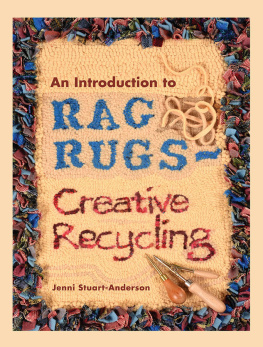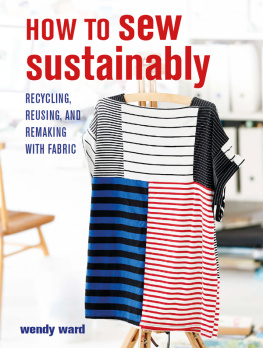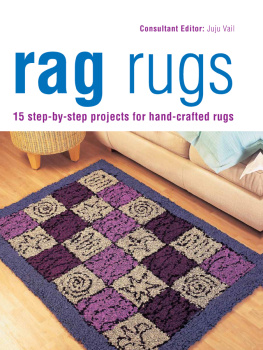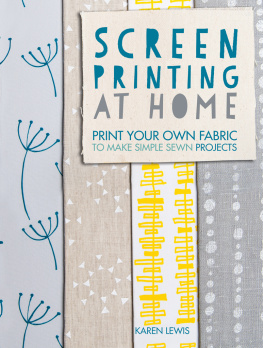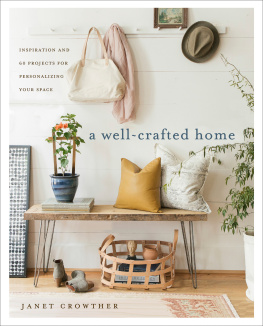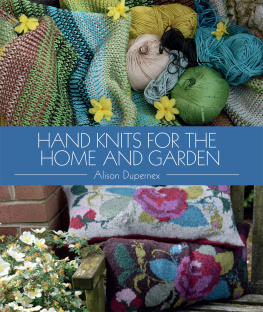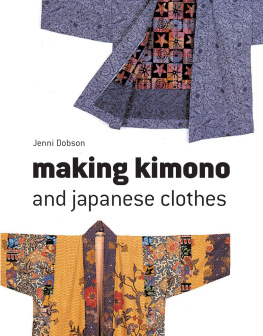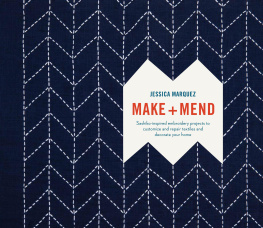Pagebreaks of the print version

AN INTRODUCTION TO
RAG RUGS:
CREATIVE RECYCLING
AN INTRODUCTION TO
RAG RUGS:
CREATIVE RECYCLING
Jenni Stuart-Anderson
First published in Great Britain in 2021 by
Pen & Sword WHITE OWL
An imprint of
Pen & Sword Books Ltd
Yorkshire Philadelphia
Copyright Jenni Stuart-Anderson 2021
ISBN 9781526780607
ePUB ISBN 9781526780614
The right of Jenni Stuart-Anderson to be identified as Author of this work has been asserted by her in accordance with the Copyright, Designs and Patents Act 1988.
A CIP catalogue record for this book is available from the British Library.
All rights reserved. No part of this book may be reproduced or transmitted in any form or by any means, electronic or mechanical including photocopying, recording or by any information storage and retrieval system, without permission from the Publisher in writing.
Pen & Sword Books Limited incorporates the imprints of Atlas, Archaeology, Aviation, Discovery, Family History, Fiction, History, Maritime, Military, Military Classics, Politics, Select, Transport, True Crime, Air World, Frontline Publishing, Leo Cooper, Remember When, Seaforth Publishing, The Praetorian Press, Wharncliffe Local History, Wharncliffe Transport, Wharncliffe True Crime and White Owl.
For a complete list of Pen & Sword titles please contact:
PEN & SWORD BOOKS LIMITED
47 Church Street, Barnsley, South Yorkshire, S70 2AS, England
E-mail:
Website: www.pen-and-sword.co.uk
Or
PEN AND SWORD BOOKS
1950 Lawrence Rd, Havertown, PA 19083, USA
E-mail:
Website: www.penandswordbooks.com
INTRODUCTION
THERE IS A HUGE resurgence of interest in making things by hand, with many traditional crafts enjoying a comeback. Rag rug making, which was recycling of old clothes out of necessity, is now part of the ever more creative upcycling movement.
Many people are keen to source things locally and there has been a realisation that we dont need to throw things away but can transform them whilst enjoying the creative process. Hand-making things can be really therapeutic, especially now we are spending more time at home at the time of writing in 2020. Even mending and patching clothes are being featured as creative skills.
Vintage rag rugs were originally made from worn-out clothing or mill waste to provide a bit of comfort in poor, cold homes but have become a medium for self-expression, even a textile art form. However, you dont need to be artistic to have a go the techniques are simple and most people can enjoy making something.
I started rag rug making as a cheap, creative outlet when I was at home with my baby daughter, years ago. Since then, I have enjoyed sharing traditional techniques with many people at workshops and when I finish this book, I plan to teach online.
Doris Tunley, who taught me some traditional techniques, made rugs for her family for over fifty years and when people see me demonstrating at shows, some have shared memories of seeing it done or having a go as children. Making-do and mending was an integral part of life for many in the British Isles and people enjoy the stories, although most rugs did not survive as they became worn out. Neighbours came in to have a go and a chat, frames were passed from house to house there was definitely a social aspect in communities where people knew their neighbours.
Bratty mats my gran made them. Everyone else sat around chatting and knitting, with long needles held under their arms. Northumberland
There were five of us and mum would get us to sit round the table on a Sunday evening and wed have a go to work on the rug.
The techniques in this book are simple to do and the projects are small so that you can finish something and, if you enjoy the technique, move on to a larger or more complex design. Starting with a large project can seem daunting have a go first, then you will have an idea how much time a larger piece will take and how much fabric you may need.
ACKNOWLEDGEMENTS
Unless otherwise stated, photographs in this book were taken by the rug makers or owners of vintage items or by Jenni Stuart-Anderson or Lorenzo Gavarini.
I would like to thank Aileen Pringle at Pen and Sword and Gaynor Haliday for her help and encouragement when editing the book.
I would also like to thank Lorenzo Gavarini for his drawings and colour illustrations and all the meals he cooked whilst I worked on the book. Thanks also to Keith James for his photography and friendship.
I am grateful to Sally Pointer who advised me about plant fibre twine and sent me an image of nettle bast she had made.
Thanks also to all the people who shared pictures of their creations, often started in my workshops. Lets keep this craft alive!
CHAPTER ONE
RAGS HOW DID WE GET HERE?
IT HAS BEEN A long journey from the production of the first textiles to the twenty-first century when we now buy more than we need and even throw much away.
A BRIEF LOOK AT THE HISTORY OF TEXTILES
That humans have been using cloth for millennia is evidenced by the discovery of sewing needles of antler and bone dated to 50,000 years ago in South Africa and Siberia. Further examples have been found in France, Slovenia, China and Spain.
The earliest dyed flax fibres were found in a prehistoric cave in Georgia and date back 36,000 years. Woven textile fragments were found in a Neolithic village on the Konya Plain of Anatolia and dated c. 6000 BCE, but since few other early textiles have survived the passage of centuries, it is difficult to ascertain exactly who was using what for cloth-making, and when they were using it.
Before spinning, yarn was created by plying (twisting) bast fibres from plant stems, like flax, lime and nettles.
Nalbinding (needle-binding) fabric fragments (c. 6500 BCE) were found in a cave near the Dead Sea and one made from lime bast fibre was found in a Mesolithic fishing village in Denmark (c. 4200 BCE).
The nalbinding technique used a single large, thick needle for a method of knotting, which works well with short lengths of yarn (bast) and was used during the Viking Age of AD 7931066 in Scandinavia before knitting and crochet were known
Excavation of a late Bronze Age settlement (Must Farm: 1000800 BCE) in Eastern England revealed fine plant fibre yarn on bobbins, and closely woven textiles remarkably well preserved through charring first, then waterlogging.
Ancient Egyptian cloth production dates from the Neolithic period; linen bandages wrapping mummified bodies show that linen cloth was woven from flax and other plant fibres from the First Dynasty (31502890 BCE). Tomb paintings show fibre preparation, plying, spinning and looms, and there are also tomb models which show weaving workshops. Spinning yarn for cloth was womens work whereas men spun yarn for nets until the early New Kingdom when they were shown weaving at vertical looms.

The 25,000 year old Venus figurine Venus of Lespugue found in France in the Pyrenees wears a cloth or twisted fibre skirt.

